Welcome to Natural Wonders, a newsletter about curiosity, Nature, and the unmentionables of outdoor life. If you were forwarded this email and realize you can’t do without it, subscribe below.
Everybody knows that earthworms are good, right? You want them in your garden because they recycle the soil and fertilize it with their “castings” (i.e., “poop” – I’m not going to subject you to another poop story. Yet.).
Earthworms aerate the soil, create channels for root growth, and recycle nutrients. Toss some in your compost pile to help accelerate decomposition. Rescue the little suckers when they get stranded on the sidewalk after a rainstorm – throw them back in your yard to help the grass grow.
Earthworms are awesome, right?!
Imagine my surprise when I stumbled across an article that actually claimed that earthworms are an invasive species. Not just a non-native species, a designation reserved for animals that don’t belong in an area but aren’t causing any harm – “invasive species” is a label used with creatures that have harmful effects on their new environment. And that’s apparently what’s happening with earthworms…
Are Earthworms an Invasive Species?
To understand how this is possible, we have to go back to the last Ice Age, which ended around 10,000 years ago. Until that time, glaciers had crept southward to cover almost all of Canada, the upper Midwestern U.S., and the Northeast down to Pennsylvania.

This obviously wiped out any earthworms that might have lived in that soil before the ice age began. When the glaciers receded and the forests grew back, they didn’t include earthworms. Those soil ecosystems evolved to include a wide variety of fungi, animals and plants that rely on the thick layer of leaf matter on the forest floor.
Then the colonists came in the 1600s. They carried with them soil from the Old World as ballast in the bottom of their ships. And – you guessed it – in that soil resided earthworms. European earthworms, who didn’t like to go deep into the soil like the native earthworms (not that there were any of those left). Instead, these new earthworms prefer the nutrient-rich layer just on the surface that contained rotting leaves, nuts, and seeds.
In essence, these earthworms are competing with the animals and plants that rely on the rich humus created by leaf litter – like salamanders and certain wild orchids – which find it hard to adjust to soil that’s been processed by earthworms. These natural residents of the northern U.S. and Canada have evolved to have the forest floor to themselves, and when earthworms try to share, the earthworms win.
One type of earthworm that arrived from Asia in the 1800s is called the “crazy worm” or “jumping worm” because it thrashes wildly enough to jump out of your hand. I’ve seen some of these and didn’t realize they’re a different species than a regular earthworm – I just thought they were extra-spunky individuals, frantic to get back to eating dirt. It turns out Crazy Worms are very enthusiastic dirt munchers, processing leaf litter much quicker than other varieties of worms. As an interesting side note – they can detach their tails as an escape mechanism, but it won’t grow back. It’s a single-use party trick.
In the Northeast – maple syrup country – the worms are beginning to impact the health of maple trees, which have shallow roots that rely heavily on the rich upper layer of soil. There’s a possibility earthworms could impact maple syrup production if they continue to spread (though they only expand their range by about 30 feet per year).

Scientists in Canada have found that the more earthworms they found, the less insect diversity in the forest. Other studies have shown the presence of earthworms has impacted bird populations. For instance, ovenbirds, which are a ground-nesting species, appear to be affected because the worms reduce the amount of nutrients in the leaf litter layer and thus critical ground cover plants die off, leaving little area for the birds to nest.
Another way earthworms are altering forests is by eating underground seeds. You didn’t know that earthworms eat seeds? Well, neither did anyone else, until they discovered it in 2010. It turns out they like the nitrogen that’s produced as certain seeds decompose. Earthworms avoid grass seeds, which don’t contain as much nitrogen. Thus, areas where earthworms are prevalent might have more grass due to all the seeds the earthworms have avoided. Earthworms even collect seeds and store them in their burrows. Who knew?!
So, surprise, surprise! Earthworms are not necessarily the helpful, harmless invertebrates we thought they were, at least in the northern climes. But where I live, in the southern U.S., it seems like plants, animals, and fungi have co-existed with them long enough to form mutually beneficial relationships.
Except for the case of…
The invasive shovel-headed garden worm!!!
This slimy flatworm probably originated in China but has since made its way to various places around the world, including the U.K., Australia, and the southern U.S. Its bizarre half-moon shaped head has no eyes. Its mouth, which doubles as its anus, is halfway down the body. It exudes a toxic slime on its skin that’s mildly poisonous and related to the toxins put off by pufferfish.
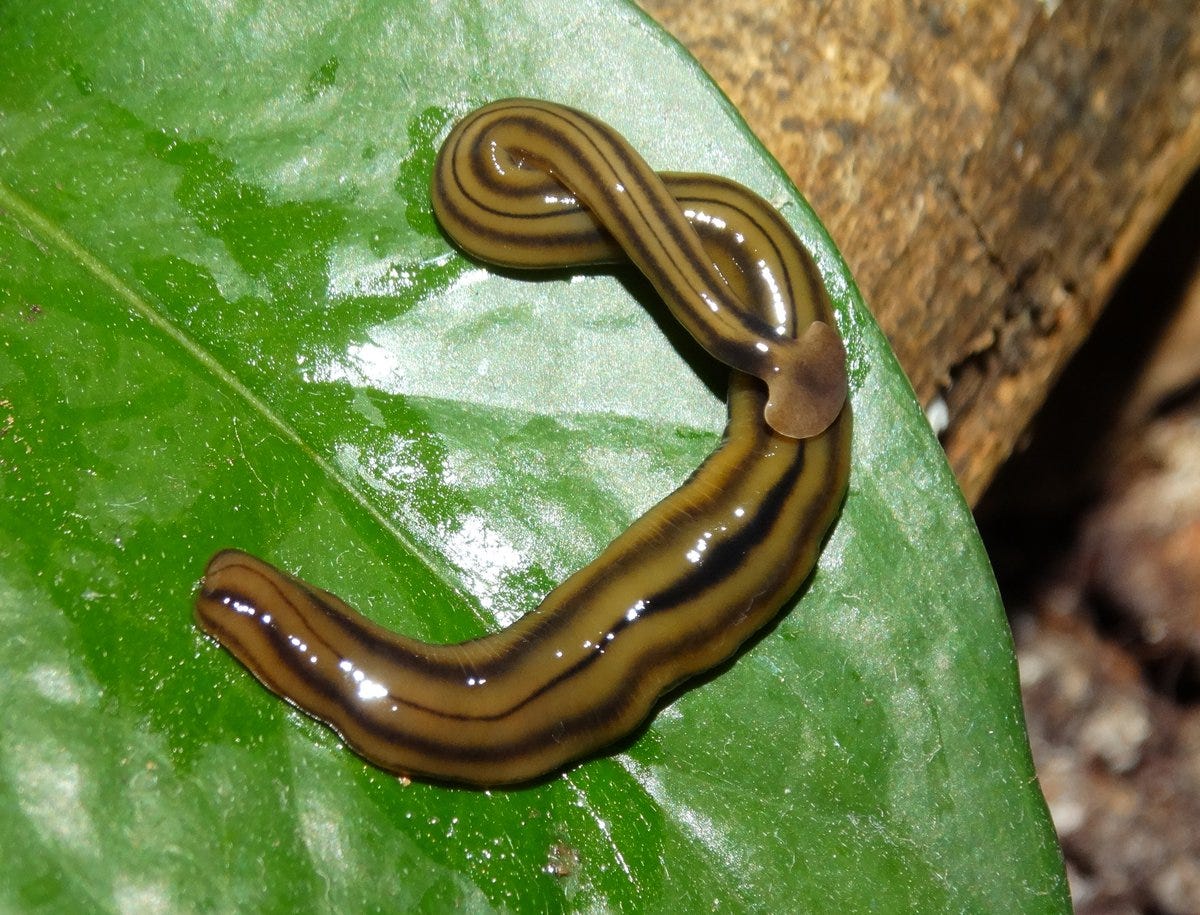
Unfortunately, the shovel-headed worm (AKA Hammerhead worm) eats earthworms and can decimate their populations. If they can’t find food, they shrink in size and can even dissolve their own tissue in order to survive. If you try to kill one by cutting it in two, you’ll just create two living worms because they can reproduce asexually. The only way to kill them – and experts recommend that you do – is to pour a salt or vinegar solution on them and put them in the freezer.
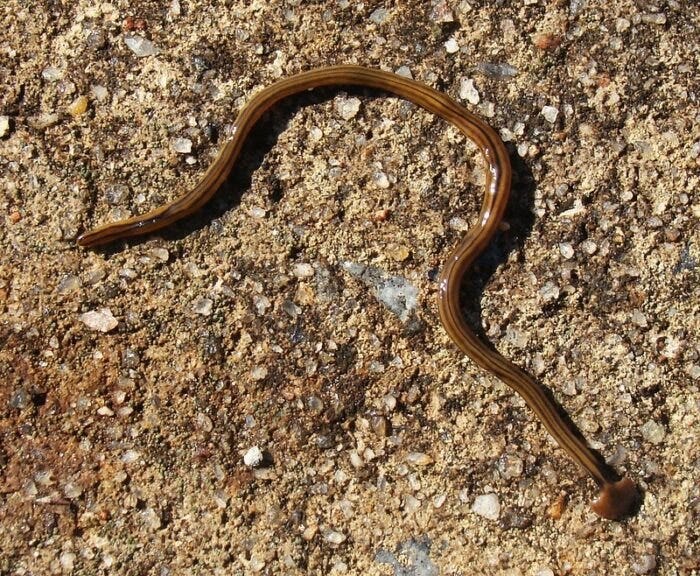
Sooooooo……
Earthworms = good for your garden, not so good for forests north of 37 degrees latitude.
Shovel-headed worms = invasive, fascinating, and toxic enough you should wear gloves to pick them up.
What’s your experience with worms? I’ve talked to a couple friends who’ve seen the shovel-headed worms already - thankfully, I have not. I tried digging up worms in the woods and while they’re not easy to find, we do have them here in the south. They all seemed fairly docile and not too “crazy.” What kinds of worms have you seen and where?
Weird Nature of the Week
Actually, this isn’t “weird” so much as heartening - I figured we all could use something a little uplifting right now:

Detritus:
The longest earthworms in the world average about 4.5 feet (1.4m) long, but can get up to 22 feet (6.7m) long!
These venomous bloodworms can grow metal teeth by transforming copper deposits they find on the bottom of the seafloor.
These river dolphins played with an anaconda in the Tijamuchi River in Bolivia.
If you enjoyed this issue, please click the “like” button below - it helps raise the profile of the newsletter and makes it easier for others to find it. And please share it with your friends!

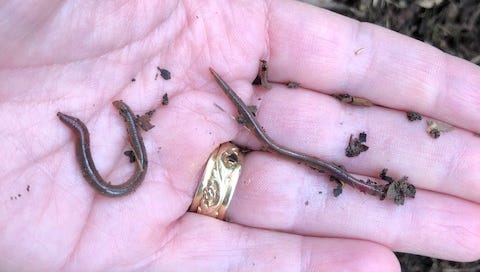



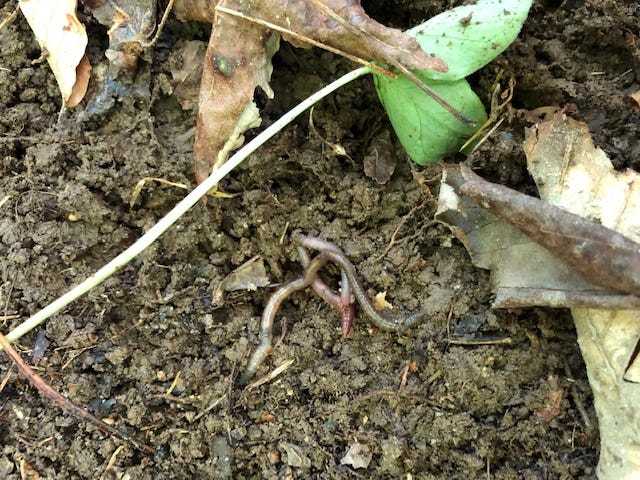
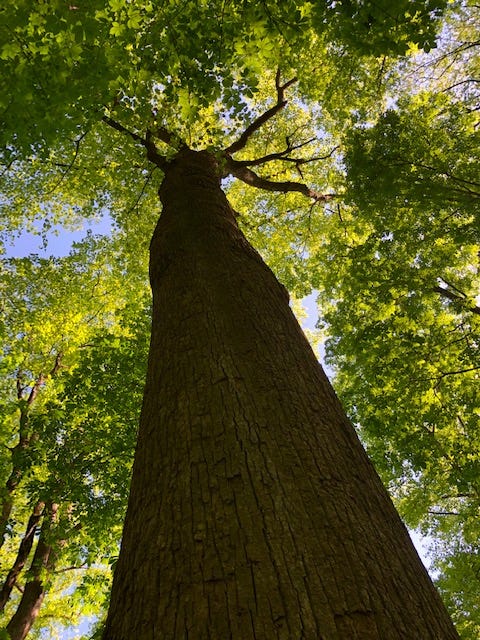
Earthworms are fascinating. I had no idea they were an invasive species in the USA. New Zealand has non-native earthworms, although I haven't heard whether they are invasive. We also have some amazing native earthworms including one with bioluminescent mucous.
I had no idea they are invasive. I’ll keep an eye out for shovel heads.